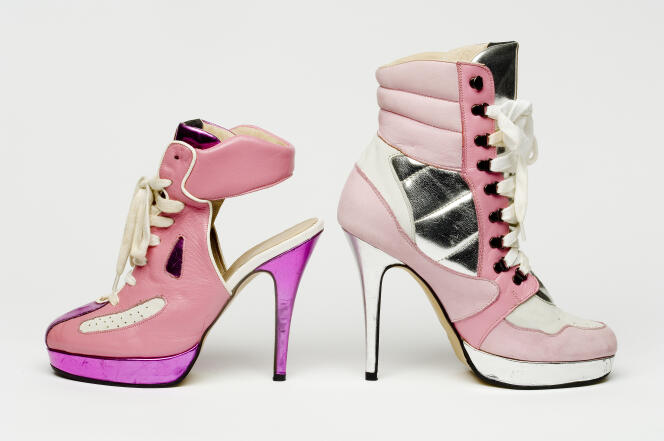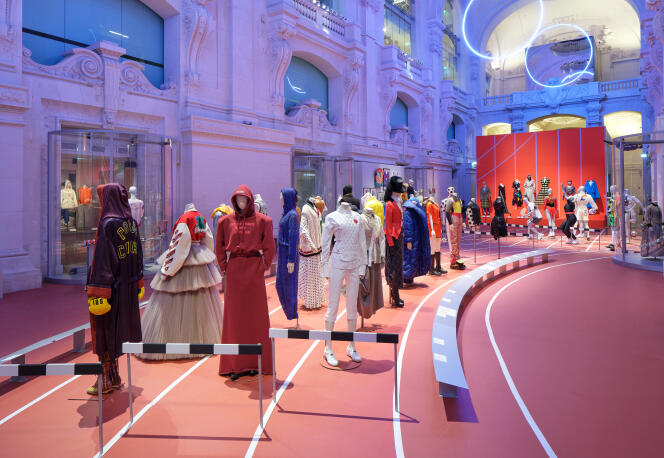There is a lot of activity in the run-up to the Olympic Games which will take place in Paris from July 26, 2024. After the Palais Galliera, which is presenting its exhibition “Fashion in motion” until September 7, 2025, it is at the tour of the Museum of Decorative Arts to show, through a richly documented exhibition, the many links that unite fashion and sport. Called “Fashion and sport, from one podium to another”, this exhibition is on display until April 7, 2024.
Telling the story of the rise of sport through clothing and, conversely, deciphering how it has been worked over time to favor the sporting body, this is the mission that Sophie Lemahieu, curator of the exhibition, has attached herself to. and curator in the fashion and textile department of the institution. The route, both chronological and thematic, thus provides a perfect dive into the sociology of sport, and implicitly into that of fashion. “ The democratization of sporting activities has allowed clothing to become more and more comfortable and less restrictive. », analyzes Sophie Lemahieu.
Looking at the first rooms, dedicated in particular to the medieval era of equestrian jousting, we realize how blatant the clothing constraint is, when armor and other iron protections prevented movements. We then discover how the arrival of the bicycle shook up clothing habits, particularly those of women who opted for culottes at the end of the 19th century.e century, or how football or rugby teams were structured, particularly in 19th century English universities.e century. And with them, the arrival of jersey jerseys, more flexible and “breathable” than cotton shirts.

The exhibition then reviews different sporting practices and the clothing associated with them. We then (re)discover the links between the tennis player Suzanne Lenglen and the fashion designer Jean Patou, an avant-garde duo who worked on the tennis courts, where the young woman loosened her movements in light cotton dresses, in the 1920s. We also see the famous “petit piqué” cotton polo shirt designed by René Lacoste in 1933, but also the first swimwear, a mid-length dress with corset, long sleeves and long pants for women, or even how “sportswear” has established itself in habits and wardrobes.
Amazon outfit by Rei Kawakubo
Popularized in 1928 in the French press, this Anglo-Saxon term ultimately only pointed out what the times dictated, namely an acceleration of sporting activity, then recommended by doctors. Thus, from 1923, Jeanne Lanvin introduced a sports department into her collections, just like Jean Patou or Gabrielle Chanel, who used soft jersey in her clothes to promote the freedom of the body. “ The sport quickly inspired couturiers and fashion designers. Some were also strong athletes before becoming stylists, such as Emilio Pucci, who was a member of the 1936 Italian Olympic team as a skier, or Ottavio Missoni, several times Italian champion in the 400-meter race. »explains the exhibition curator.
You have 35% of this article left to read. The rest is reserved for subscribers.
